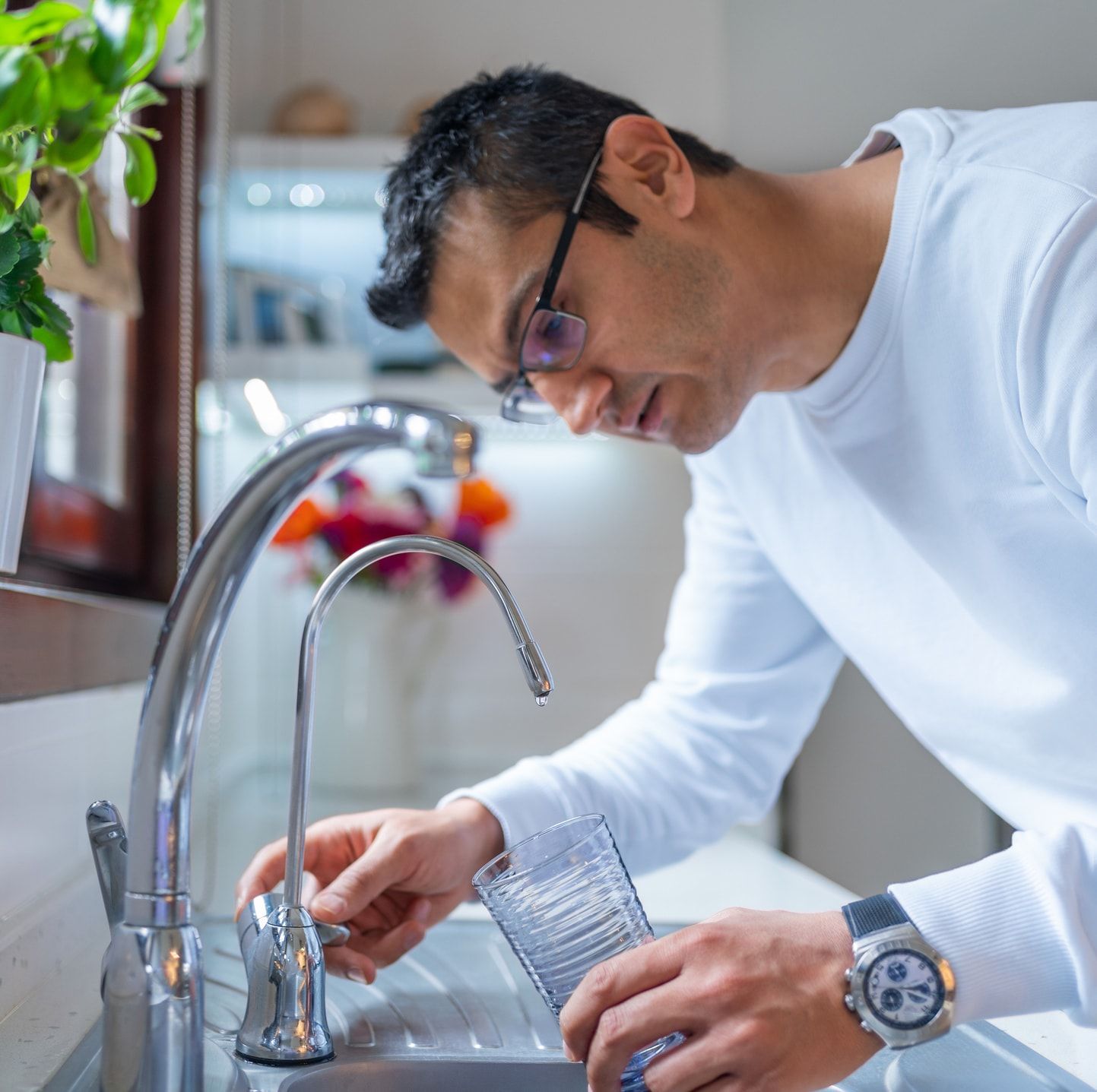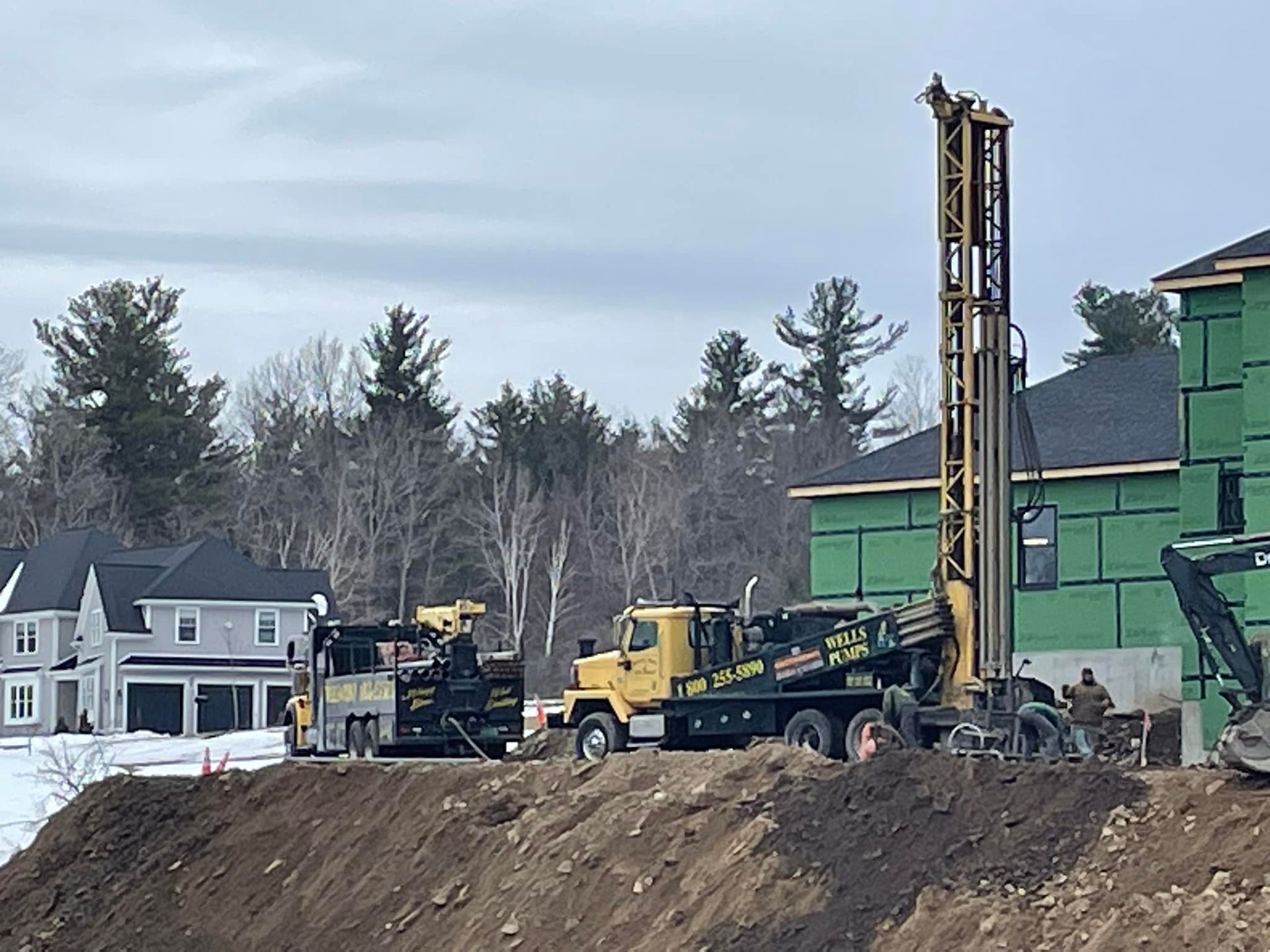Water treatment, water testing, well drilling and hydro-fracking services for VT, NH, and MA.
Do you need emergency well water service?
How to Measure and Adjust Water Tank Pressure for Optimal Performance
Struggling with inconsistent water flow? The issue could be your water tank pressure. This guide will teach you how to measure, adjust, and maintain the correct pressure to keep your system running smoothly. Read on to learn simple steps to ensure your water pressure is just right.
Key Takeaways
- Maintaining proper air pressure in your water tank is essential for efficient operation and longevity of your plumbing system.
- Regularly check and adjust your water tank pressure using tools like a pressure gauge and air compressor to prevent issues and ensure optimal performance.
- Know when to seek professional help for serious pressure problems, such as persistent low water flow or unpleasant odors, to avoid costly repairs.
Understanding Water Tank Pressure
A pressure tank is much more than just a metal container holding water. It’s a vital component in your water system that buffers pressure and flow, ensuring a steady supply of water whenever you need it. Think of it as a reservoir that allows your well pump to operate intermittently rather than continuously, extending the life of your pump and saving energy. A water pressure tank plays a crucial role in this process.
Maintaining consistent water pressure is crucial for the longevity of your plumbing system. Sudden changes in pressure can cause serious damage, leading to costly repairs. This is where the air pressure within the tank comes into play. The correct air pressure ensures the system operates efficiently and prevents those pesky pressure drops that can interrupt your water flow.
The well pressure tank operates by maintaining a balance between air pressure and water pressure. When the air pressure is set correctly, it should be 2 psi below the pump’s cut-in pressure setting. This delicate balance ensures optimal performance and prevents the system from cycling on and off too frequently.
Understanding how a pressure tank works and the importance of maintaining the correct air pressure can save you from future hassles. With this knowledge, you can now appreciate the critical role your pressure tank plays in your well water system.
Tools Required for Measuring and Adjusting Water Tank Pressure
Before diving into the process of measuring and adjusting your water tank pressure, you need to gather the right tools. One of the most crucial tools is a pressure gauge, which accurately assesses the air pressure within your pressure tank. It’s essential for ensuring your readings are correct and reliable.
An air compressor is also necessary to add compressed air to the tank when pressure is low, restoring it to the correct level. Additionally, a garden hose is needed to drain water from the tank before measuring its air pressure.
Having these tools on hand will make the process smoother and more efficient. Having the right equipment not only saves time but also ensures accurate results, ultimately extending the life of your well pressure tank.
How to Measure Water Tank Pressure

Begin by locating the pressure gauge, typically connected to a Schrader valve on your pressure tank, to measure the water tank pressure accurately. This valve is often found on both metal and composite tanks, making it a standard feature to look for.
Once you’ve found the valve, remove the air valve cap and check for any water leaks from the valve before proceeding. Press the pressure gauge against the schrader valve to obtain a reading of the air pressure within the tank. This will indicate whether your tank pressure is within the recommended range.
Regular pressure checks keep you ahead of potential issues. Monitoring these readings ensures your water system operates efficiently and without unexpected interruptions.
Identifying Common Pressure Issues
Common pressure issues can disrupt your water supply and cause significant inconvenience. A significant drop or fluctuation in water pressure often signals well pump issues and should prompt a call to a well service expert. Addressing these problems early can prevent more extensive damage.
Waterlogging in a pressure tank, often caused by a ruptured bladder, is a common issue. This causes pressure fluctuations that can compromise your water supply. Leaking from the air valve typically indicates a ruptured bladder, necessitating tank replacement. Additionally, an unexpected rise in your electricity bills may suggest that the well pump is working harder than normal due to an underlying issue.
Frequent cycling of the well pump or unusual sounds can signal mechanical problems needing a technician’s attention. Corrosion in the well system is another serious problem that can lead to severe damage if not addressed promptly. Regular inspections can identify these issues early, ensuring optimal tank performance.
Steps to Adjust Water Tank Pressure

Several critical steps are involved in adjusting your water tank pressure to ensure accuracy and safety. First, cut power to the well system to prevent the pump from starting. Then, drain the water from the well tank by opening a hose spigot before measuring the air pressure.
After draining, turn off the pump’s power and the outgoing valve to prevent water from entering the tank during recharging. Set the air pressure in the tank to 2 psi below the pressure switch’s cut-in setting for optimal performance. Use an air compressor to add air through the snifter valve, ensuring the tank is fully evacuated of any remaining water.
After completing these steps, check the air pressure again to make sure it is at the desired level. This careful adjustment maintains consistent water flow and extends the pressure tank’s life.
Recharging Your Water Tank If Pressure Is Low
If you notice that the pressure in your tank is low, it’s time to recharge it. An air compressor is necessary for adding air to the pressure tank, ensuring it operates efficiently. Adjust the tank’s air pressure using the compressor if it falls below the recommended level, which is typically 2 psi below the cut-on pressure of the pressure switch.
The correct air pressure for most pressure tanks is about 5% less than the pump’s cut-in pressure setting. This slight difference ensures that the well pump doesn’t have to work excessively, thus prolonging its lifespan. Slowly and carefully fill the tank with air until you reach the desired pressure level.
Recharging your water tank is a simple but vital maintenance task that ensures your water system continues to function smoothly. Keeping an eye on the air pressure and recharging as needed can prevent rapid cycling and other issues.
Ensuring Proper Function After Adjustment
Once you’ve adjusted the pressure, it’s crucial to ensure everything is functioning correctly. Start by restoring power to the pump and checking for any leaks in the system. Tap the tank gently to assess the bladder’s condition; a hollow sound at the top indicates proper air presence.
After recharging, it’s recommended to run the water until it is clear of sediment before placing any water conditioning units back into service. This step helps ensure that your water system is free of debris and operating at its best.
Regular checks and maintenance after adjustments keep your water system running efficiently. Following these steps ensures stable water pressure and proper system function.
When to Call a Professional
While many pressure issues can be managed at home, some situations require professional help. Unpleasant odors like sulfur or rotten eggs may indicate a malfunctioning well pump and require professional assistance. Frequent lack of water flow when turning on a faucet is a critical issue that should be addressed by a well service professional.
Calling a professional at the right time can save you from extensive damage and high repair costs. Trusting experts with complex issues keeps your well system reliable and efficient.
Summary
Maintaining and adjusting your water tank pressure is essential for a well-functioning water system. By understanding the role of the pressure tank, using the right tools, and following proper procedures for measuring and adjusting pressure, you can prevent common issues and extend the life of your system.
Regular maintenance and knowing when to call a professional ensures that your water system continues to provide a steady and reliable water supply. Take control of your water system today and enjoy the peace of mind that comes with a well-maintained pressure tank.
Frequently Asked Questions
What tools do I need to measure and adjust my water tank pressure?
To measure and adjust your water tank pressure, you'll need a pressure gauge, an air compressor, and a garden hose for draining. With these tools, you can easily manage your tank's pressure levels.
How do I know if my pressure tank has a ruptured bladder?
If you're noticing pressure fluctuations, waterlogging, or leaks from the air valve, your pressure tank may have a ruptured bladder. It's a good idea to get it checked out!
What is the correct air pressure setting for my pressure tank?
The correct air pressure setting for your pressure tank is 2 psi below the cut-in setting of your pressure switch. This will help ensure your system functions efficiently.
How often should I check my water tank pressure?
You should check your water tank pressure regularly to catch any potential issues early and keep everything running smoothly. It's a good habit to include in your maintenance routine!
When should I call a professional for help with my water system?
You should definitely call a professional if you notice unpleasant odors, have no water flow, or if your well pump is cycling frequently. It's better to get expert help to avoid bigger issues down the line!
All Rights Reserved | Wragg Brothers Well Drilling


